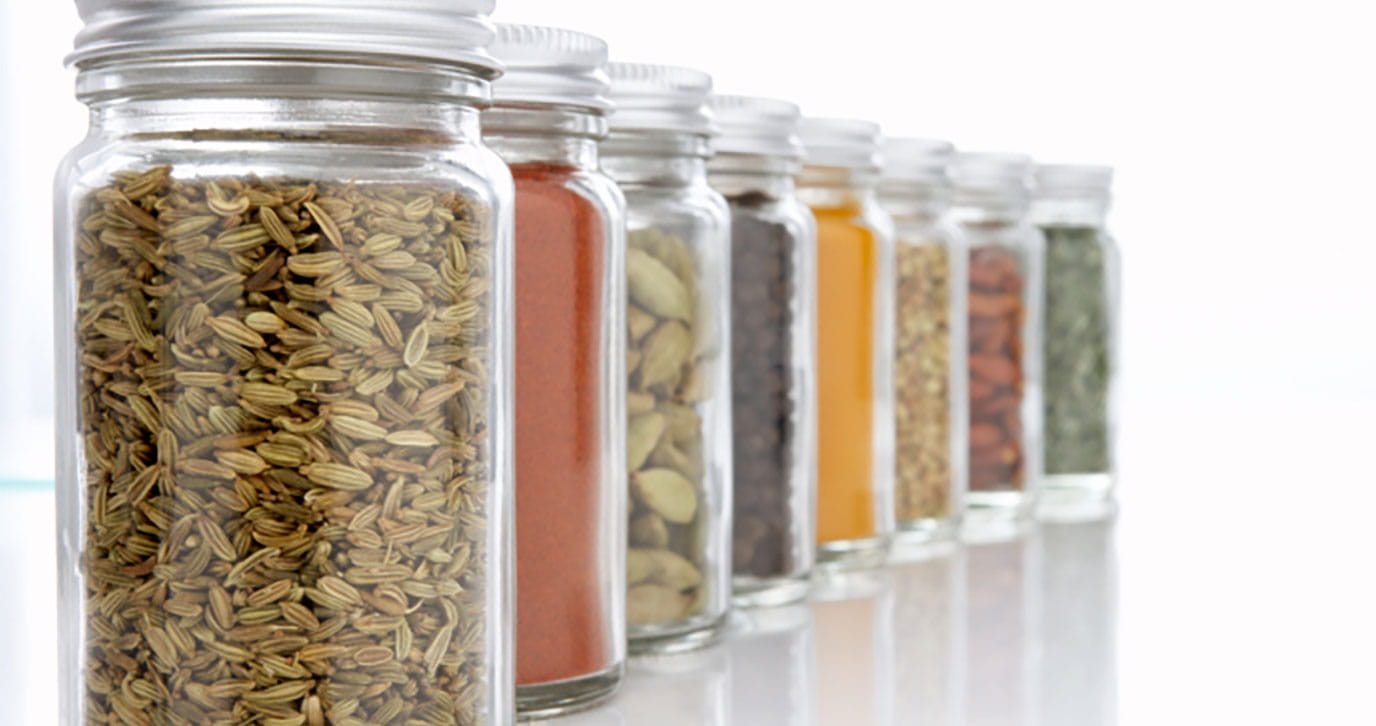Spice MyPlate was a pilot nutrition education intervention that focused on using spices and herbs to improve diet quality among Baltimore high school students. Baltimore was chosen because it represents the “perfect storm” of risk factors for future health problems among high school students. The community faces environmental challenges such as “food deserts,” while schools struggle to provide effective nutrition and physical education to students. Furthermore, 40% of Baltimore high school students are more likely to be obese than high school students statewide.
SPICE MYPLATE STUDY DESCRIPTION
The pilot study was designed to determine whether a nutrition education program focusing on spices and herbs improved objective and subjective measures of diet quality to a greater extent than standard nutrition education alone. The intervention was meant to be exciting, engaging, and enjoyable for students. Two schools with student populations that were primarily African American agreed to participate. One school had 1637 students and was assigned to the intervention; the other school (564 students) was assigned to the control arm. In all, 108 students in grades 9 to 12 were enrolled in the study. Each participating student signed an assent form and submitted a consent form signed by a parent or guardian. The study was approved by the institutional review board of the University of Maryland School of Medicine.
SPICE MYPLATE STUDY DESIGN
Both groups received 1 hour of standard nutrition education at the start of the study. The Spice MyPlate intervention group received an additional 9 hours of nutrition education that included 2 cooking sessions and a grocery store tour. The intervention focused on 12 core spices and herbs chosen for their palatability, affordability, accessibility, versatility, health benefits, and mix of familiarity and novelty: basil, black pepper, cinnamon, cumin, garlic, ginger, nutmeg, oregano, red pepper, rosemary, thyme, and turmeric. The primary study outcome was objective changes in diet quality based on validated 3-day food logs, which included a weekend day. Diet quality was calculated based on food record data and expressed by the number of weekly servings of vegetables, fruits, whole grains, and lean protein sources such as lean meats, poultry, eggs, beans and peas, seafood, as well as nuts and seeds. Secondary outcomes included subjective changes based on 8 questions that assessed attitudes toward healthy eating using a 3-point Likert scale. Assessments were made in both groups at the intervention midpoint (week 3), at the end of the intervention (week 6), and 4 weeks later (week 10). Differences between the Spice MyPlate and control groups in diet quality and healthy eating attitudes changes were estimated by t tests. In addition, multivariable regression modeling was also performed using generalized estimating equations to control for confounding introduced by potential differences in key covariates between the Spice MyPlate and control groups at baseline. Statistical significance was defined as 2-tailed P ≤ .05.
SPICE MYPLATE STUDY OUTCOMES
The food log data indicated that the groups did not differ in their intake of vegetables, fruits, and dairy products at the end of the study, but the Spice MyPlate group consumed more whole grains and lean protein foods. The students’ attitudes toward healthy eating differed between the groups at the 10-week assessment, with the Spice MyPlate group reporting being more likely to consume vegetables, protein, and dairy foods compared with the control group (P ≤ .05).
Consumption of protein foods, for example, increased from about 32 oz to 40 oz daily or 7.7 oz/wk in the Spice MyPlate group (P < .05) by the end of the 10-week period. The Spice MyPlate group also reported being more likely to eat vegetables and whole grains with added spices and herbs than did the control group (P ≤ .05).
STUDY LIMITATIONS AND CONCLUSION
This pilot study had several limitations. First, students in the Spice MyPlate group received 9 hours of nutrition education compared with 1 hour for the control group (the current amount of nutrition education provided in Baltimore’s public high school curriculum), which may account for part of their improvements in diet quality. Second, there may have been intervention “ceiling effects” due to the urban demographic characteristics of the students, many of whom had limited access to healthy food. Third, about 75% of students in both schools were participating in the School Breakfast Program and the National School Lunch Program. Because these programs offer standardized menus, it was difficult for students to improve their meals. Nonetheless, a future study might consider this pilot study strategy and use a larger, more generalizable sample from several high schools. The Spice MyPlate nutrition education pilot study found that some measures of diet quality and attitudes toward healthy eating improved in the spice and herb intervention group compared with the control group.















